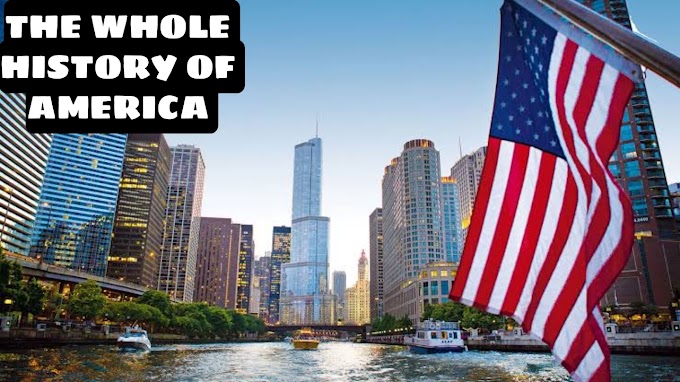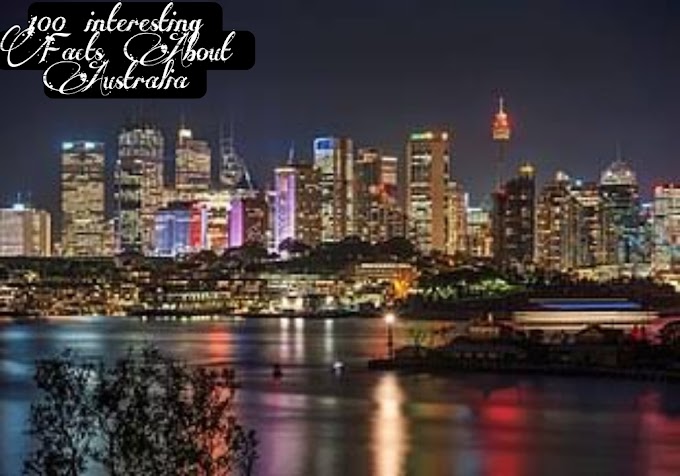Top 10 Amazing Facts About Ireland
Hello Guys:
Welcome to Countries Facts Wet the tea and stop acting the maggot! We're sucking the diesel now as we venture through the North Atlantic island of Ireland. For this lucky installment, we are stopping off at The Emerald Isle, tossing back a pint of Gat, and reveling in the country’s natural beauty.
1 Fame of the Irish Fame spreads from all over the world, but Hollywood and the music industry has Ireland to thank for some of its brightest stars. You wouldn’t know it from most of his roles, but pretty-boy Colin Farrel was born in Castleknock, Ireland. Joining him from the land of Saints and Scholars is former face of Agent 007, Pierce Brosnon, Harry Potter actress Evanna Lynch, U2 frontman, Bono, and unforgettable novelists like Bram Stoker, Oscar Wilde, and Jonathan Swift. Let us also not forget actor Michael Gambon, UFC fighter Conor McGregor, novelist Oscar Wilde, WWE wrestlers Sheamus and Becky Lynch, and YouTube’s own gaming heartthrob Jacksepticeye.
2 Irish Inventions It probably comes as no surprise that the first written account of whisky was in Ireland, circa the Irish Annals of Clonmacnoise in 1405, but the country should be recognized for far more than its contributions to the alcohol industry – though Guinness does deserve a mention. Ireland’s own Robert Boyle contributed facets of chemistry still recognized day, such as Boyle’s Law, which states gas pressure and volume adversely affect one another. Other great contributions include Samuel O’Reilly’s modification of Thomas Edison’s electric pen into a tattoo needle, the Brennan torpedo, early color photography, and the first U.S. and Royal Navy submarines.
3 Irish Cuisine When St. Patrick’s Day rolls around, some countries (looking at you, United States) revert to one common staple – corned beef and cabbage. The irony being that corned beef and cabbage actually stems heavily from New York City’s Jewish community, who introduced it to the working class Irish. It may be time to replace that perfect pairing with something a bit more authentic, such as Irish soda bread, dulse, blaa, potato farls, crubeens, black pudding, skirts and kidneys, boxty, or coddle. To follow these fine cuisines up, Irish whisky or coffee cake, apple amber, or a carrageen pudding would be delightful sweet treats.
4 Tourist Attractions of Ireland Ireland is a beautiful country of vast greenery, but there is far more to ogle than its entrancing fields of green. One of the country’s most notable landmarks and tourist destination is the Blarney Stone, a block of limestone integrated into a tower of the Blarney Castle in Blarney, Ireland in 1446. Legend has it that those that successfully kiss the stone are bestowed with the gift of gab and an unimpeded skill of flattery and eloquent speech. Ireland tourism is about more than just kissing stones, as it also offers the beautiful River Shannon, the impressive Saint Fin Barre’s Cathedral, dozens upon dozens of castles, and also, the Home of the Guinness Storehouse.
5 Ireland Wildlife To those that enjoy stereotypes, Ireland is more than just leprechauns and beer - It’s a beautiful country home to its own sustainable ecosystem filled with majestic creatures and critters. Naturalists, break out your cameras so you can get some beauty shots of the harbour porpoise, grey seal, red fox, peregrine falcon, red deer, basking shark, and bottlenosed dolphin. Arachnophobes will certainly enjoy the zebra, wolf, and raft spiders… right? Well, if not, Ireland is also home to the brown long-eared bat and Leisler’s bat, who can take care of the eight-legged population. Anyone suffering from Ophidiophobia can take solace, snakes don't exist in the wild in Ireland - you'll only find them in private homes as pets or in a zoo.
6 Irish Folklore They’ve been the subject of horror movies, danced around in our cereal, and have even terrorized the small neighborhood of Crichton in Mobile Alabama, but what do we really know of these miniature fables? Leprechauns can be traced back to several origins, the most fun of those being the 18th century luchorpan, a water spirit that, overtime, became synonymous with fairies that haunted cellars and enjoy libations. Another version links leprechauns to leath bhrogan, or shoemakers, as their appearance in folklore is often that of cobblers and not gold-wielding dancing fairies, though legend says they do guard ancient treasures. Catch one, and it’s said to barter immense wealth for freedom.
7 Irish Influence on Samhain Try to search for the origin of Halloween and you’ll find yourself lost in a snaking labyrinth of websites with conflicting information. One such stop-off on your journey for the truth is the Festival of Samhain, a Gaelic festival that celebrated the end of the harvest season. The first link between Halloween to Samhain is the date, as Samhain starts at sunset on October 31st and ends at sunset on November 1st. Additionally, Irish mythos that the festival occurred during a time when doorways to the “other side� were open and the dead were free to roam the earth helped strengthen the connection. Over time and through Christian and Roman Catholic influence, Samhain slowly became integrated into Halloween tradition.
8 Tailteann Games Twenty-eight years after the very first Olympic Games took place, the Irish Free State re-instituted an ancient event that dates back as far as 1600 BC. The Tailteann Games started as a funeral ritual, purportedly conceived by Irish deity, Lugh Lamhfhada, who sought an elaborate ceremony for his deceased foster-mother, Tailtiu. The games began with the honoring of the deceased, followed by proclamation of laws, and finally a series of physical games including boxing, archery, running, hurling, and long jump. In 1924, 1928, and 1932, the Gaelic Athletic Association revived the games which now live on in an annual inter-provincial competition hosted by the Athletics Association of Ireland.
9 Easter Rising Easter week, 1916. While families all over celebrated the resurrection of Christ, Irish rebel forces took arms against the British Army to turn Ireland into its own republic. On April 24th, 1916 – Easter Monday – a force of approximately 1,200 rebels took control of key points in Dublin, setting up headquarters at the General Post Office. A five-day-long skirmish between the British soldiers, who were also engaged in World War I, and Irish rebels yielded a casualty count of 466 soldiers and civilians before Patrick Pearse, Director of Military Organization for the rebels, issued an order of surrender. Though considered a loss, Easter Rising sparked the fire for Irish nationalists that lead to the 1919 Irish War of Independence.
10 Irish War of Independence Post-Easter Rising, the Irish republican party of Sinn Fein was formed in 1917 and took office after the 1918 election. It took only one month for the party to establish Dail Eireann, the Assembly of Ireland, and, on January 21st, 1919, declared independence from the British. On that same day, soldiers of the Irish Republican Army shot members of the Great Britain-run Royal Irish Constabulary, inciting the conflict over Ireland’s independence. The war continued for nearly 2 1/2 years with combat ceasing on July 11th, 1921 under a truce that led to peace talks and the eventual creation of the Anglo-Irish Treaty on December 6th, 1921. In January of 1922, British forces began evacuating Southern Ireland, allowing the Irish Free State to stand on its own
I hope you guys this article will be informative from you we'll probably literally love you forever and ever.
















